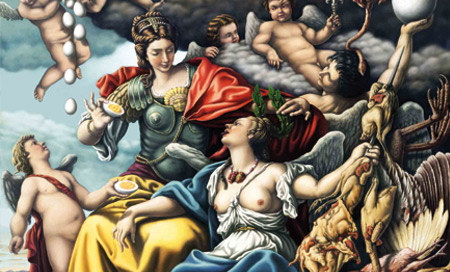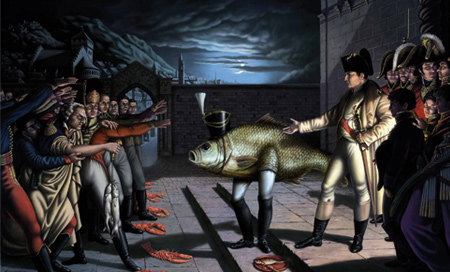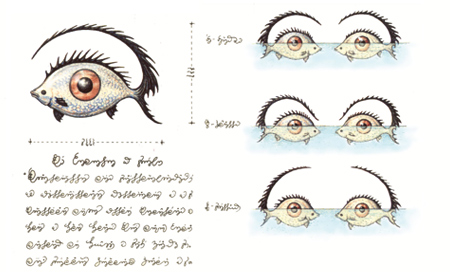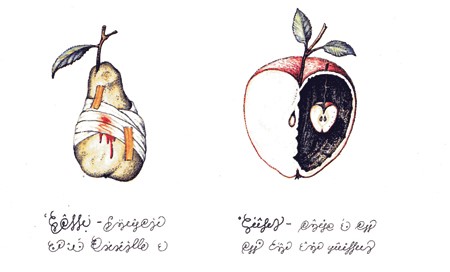Luigi Serafini
Biography
During his studies of architecture, he works with Maurizio Serafini Sacripanti and Luigi Pellegrin. In 1971 he travels through the United States with a sleeping bag and his Rolleiflex and stops working with Paolo Soleri at the rising Arcosanti. In 1972 goes as far as Babylon, along the Euphrates. In 1973 he visits equatorial Africa and the Congo River. Lateron, he begins his career as an architect.
In 1981 he publishes the first edition of the Codex Seraphinianus with Franco Maria Ricci Editore, which captures the attention of Roland Barthes and on which Italo Calvino writes an essay published in the collection “Collezione di sabbia” (Oscar Mondadori). The Codex Seraphinianus has also been inspiring, since 1986, for the French choreographer Philippe Decouflé, author of the ceremonies of the Olympic Games in Albertville.
In addition to being a painter, sculptor, ceramicist, jewellery artist etc., Serafini does his brave raids into the field of design, as in 1981 with the collective Memphis by Ettore Sottsass and then projects clearly metalinguistic, as the chairs “Suspiral” and “Santa” for Sawaya & Moroni or glasses and lamps for Artemide.
In 2002 he made “Geometrindi and Matematindi”, a big round painting for the Council Room of the Department of Mathematics Francesco Brioschi of Milan Polytechnic.
In 2003, in correspondence of the new station Materdei Naples Metro exit, was installed his large, bronze, polychrome sculpture named Carpe Diem, with a facing floor decorated with bas-reliefs in coloured polyester, named “Paradiso Pedestre”.
From May to June 2007 it took place, at the PAC (Pavilion of Contemporary Art in Milan), an “Ontological Show” entitled “Luna-Pac Serafi with almost as many as 11,000 visitors in its opening 30 days.
In July 2008 it was made the border installation, “balançoires sans Frontières”, in polychrome wood (Swings Without Borders) in Castasegna, along the Swiss-Italian border, after Chiavenna on the way to St. Moritz. The structure allows swinging between the two neighboring countries and was recently acquired by the city in Switzerland.
He has published stories with Fandango, Bompiani, Archinto as long as articles on many Italian newspapers and worked with programs on Radio Rai Tre.









